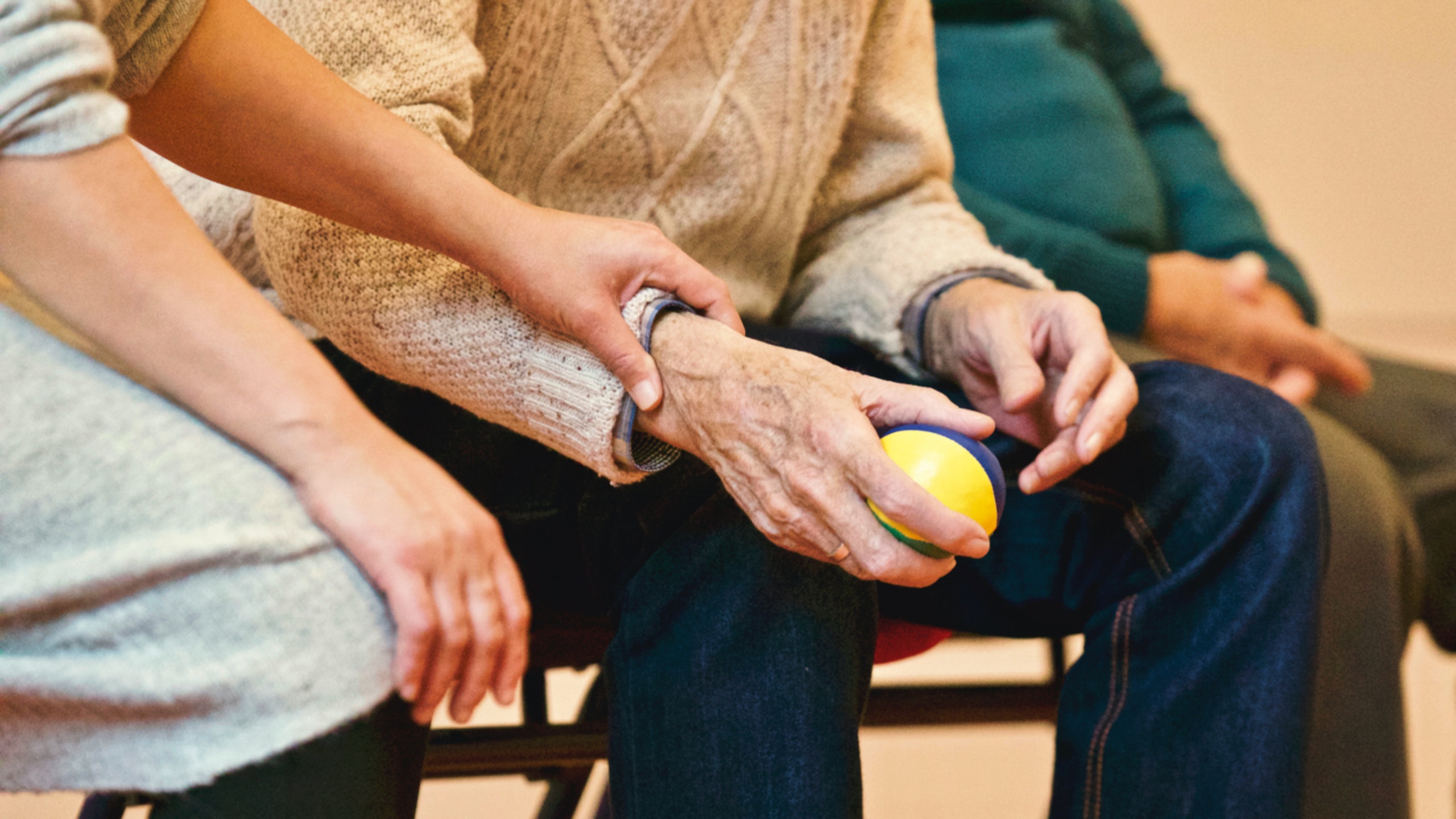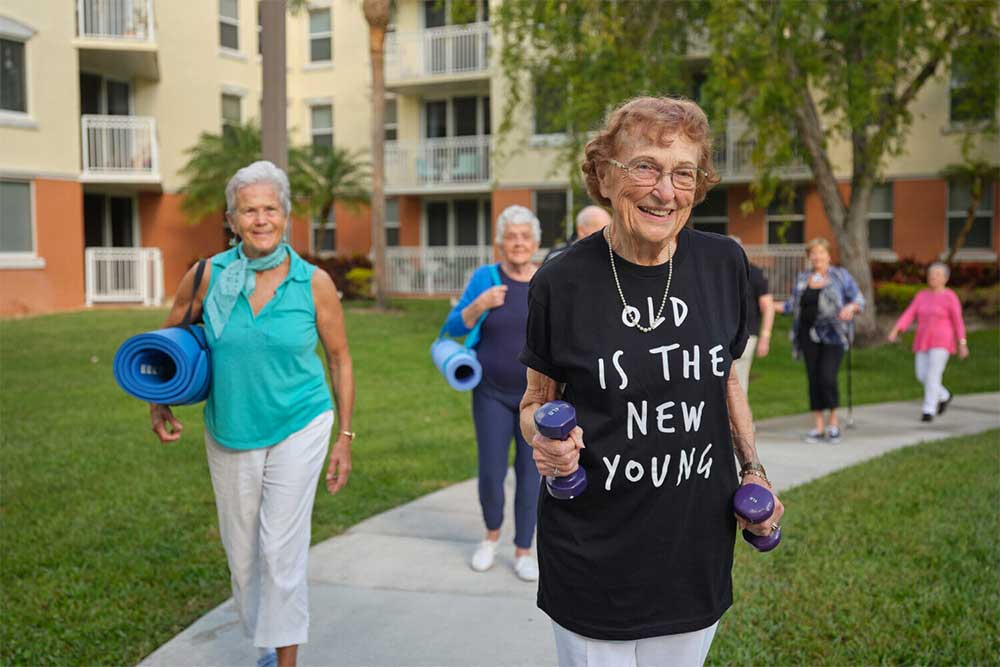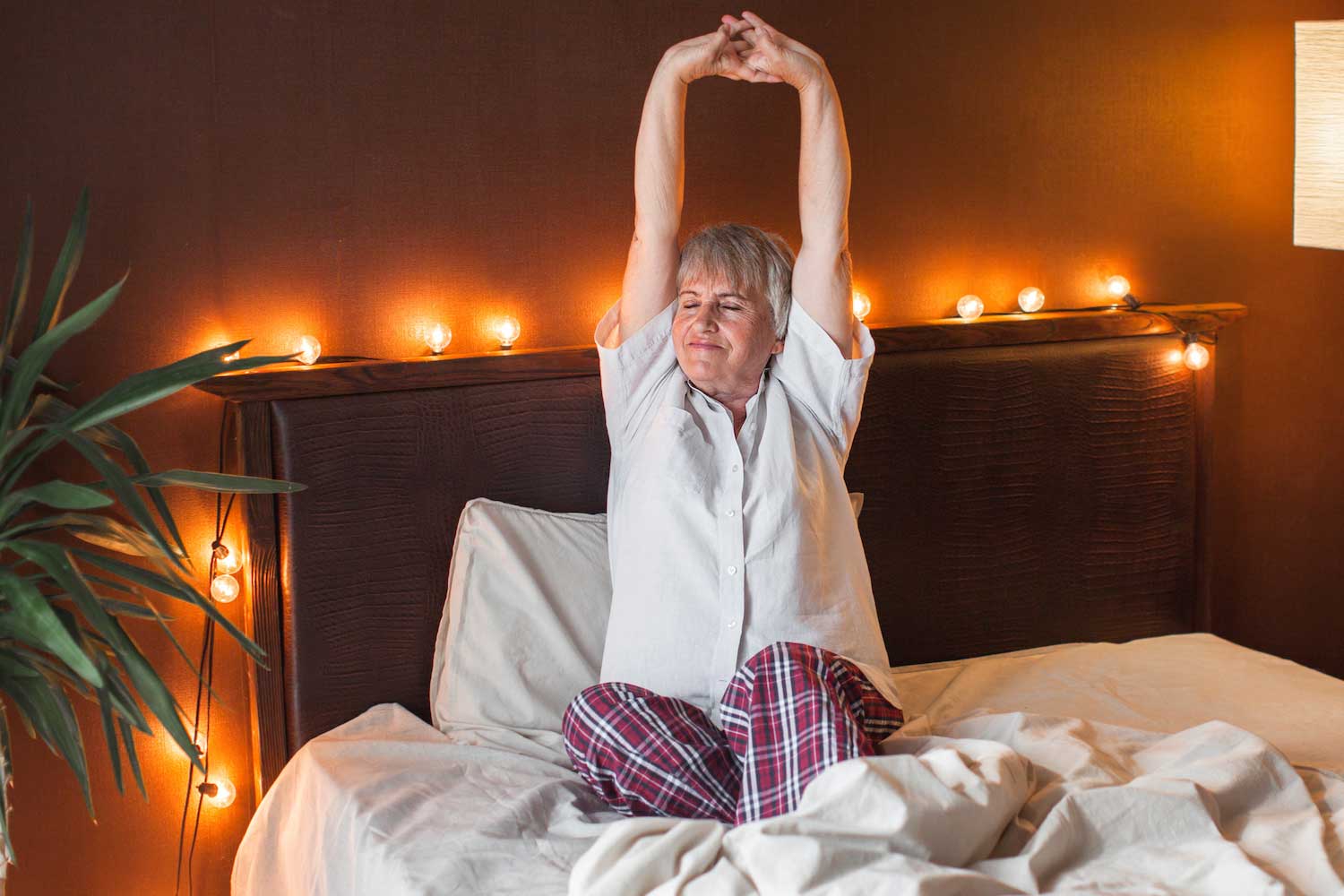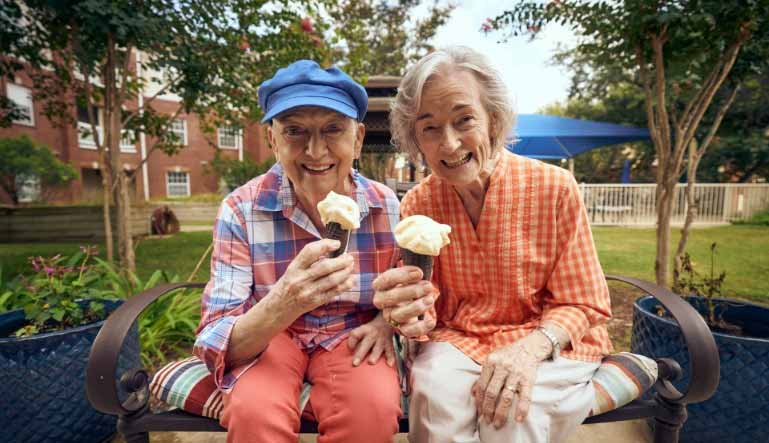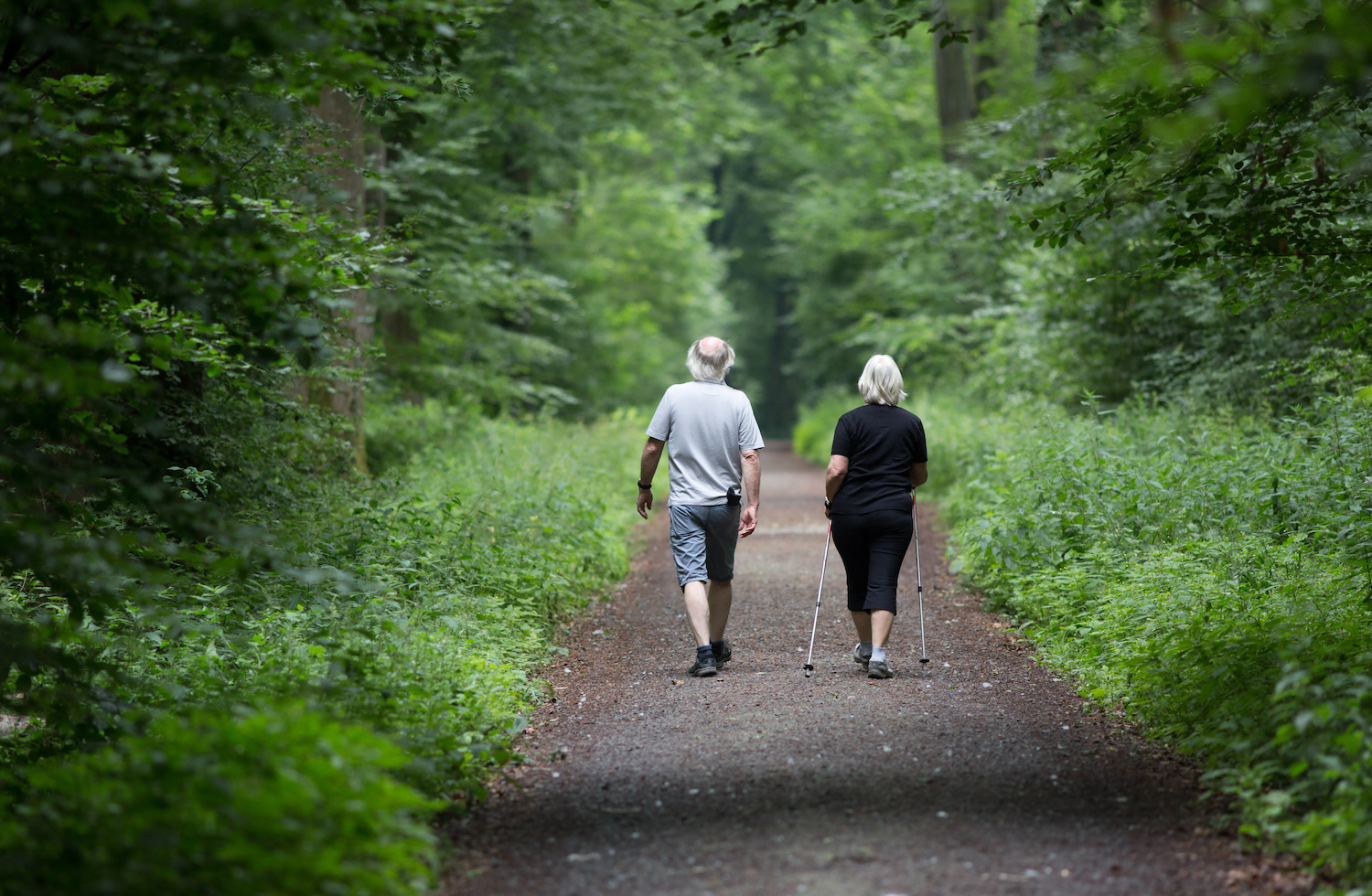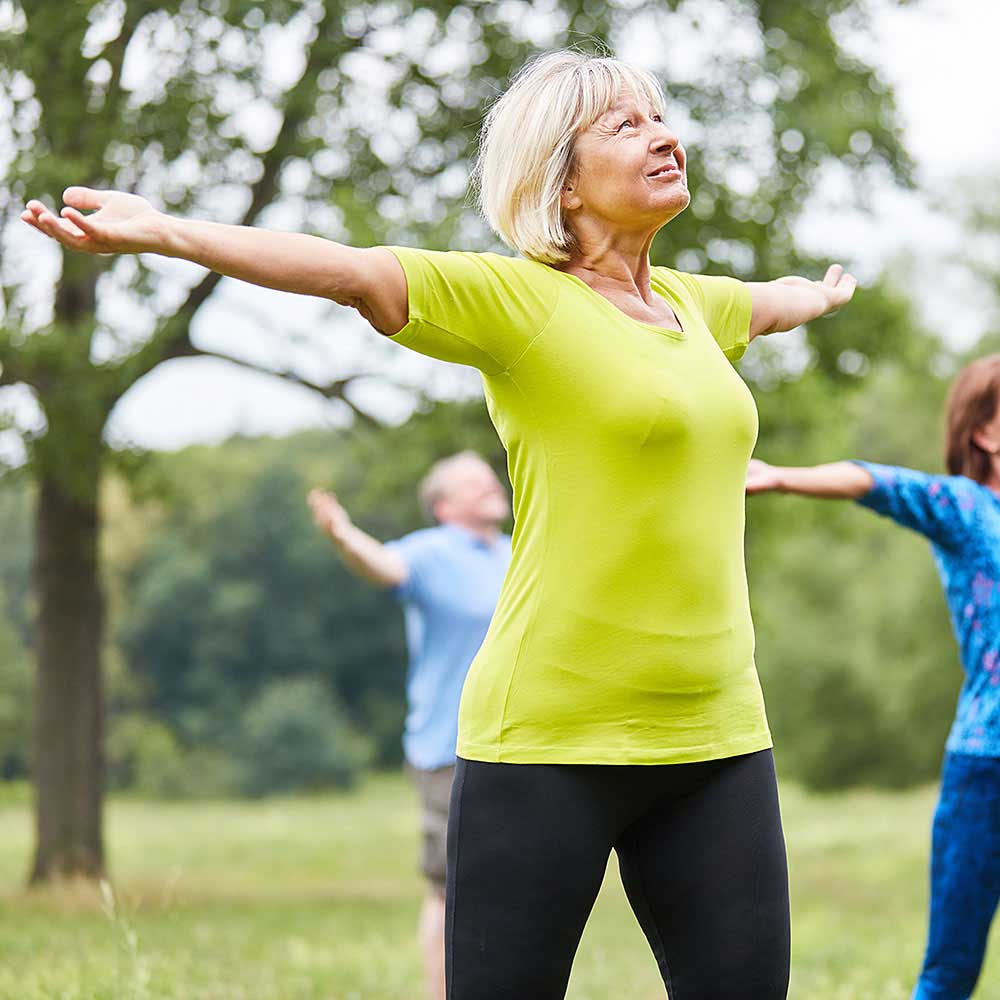Swimming is universally known as a great, low-impact exercise for all ages, but it’s a particularly beneficial exercise for older adults. Swimming for seniors offers more than just physical health benefits. On warm-weather days, swimming offers a chance to get much-needed fresh air and vitamin D.
On colder or rainier days, swimming indoors can be a relaxing act of self-care, and no matter the weather or water source, it’s always fun to swim with friends. Taking swimming classes as part of a senior fitness routine can offer camaraderie and a regularly scheduled activity to look forward to, helping to maintain familiar routines while getting gentle exercise.
Table of Contents
- Health Benefits of Swimming for Seniors
- 7 Ways Swimming Keeps Seniors Active and Healthy
- Pool Exercises for Seniors
- Find a Senior Living Community with swimming Pool
Let’s take a look at some of the specific benefits of swimming for seniors.
Health Benefits of Swimming for Seniors
It’s no surprise that swimming is good for your health, and it’s a perfect exercise for seniors because it offers an excellent source of cardiovascular exercise while going easy on joints. Unlike high-impact cardiovascular exercise like running, swimming uses the benefit of the water’s buoyancy to take stress off of the joints while providing gentle resistance to work up to a safe target heart rate.
7 Ways Swimming Keeps Seniors Active and Healthy
- Promoting cardiovascular health – Swimming is an amazing way to maintain cardiovascular health and help prevent cardiovascular disease. By working both the heart and lungs, swimming helps the body use oxygen more efficiently and improve circulation, reducing risk of coronary heart disease, stroke, and helping to improve things like blood pressure and cholesterol.
- Improved flexibility – swimming allows for gentle stretching and safely expanding range of motion over time, helping improve mobility and promote comfort when moving outside of the pool.
- Improved bone health – swimming can help improve bone mineral density (BMD), helping to fight against bone loss diseases like osteopenia and osteoporosis. It’s also a great way to naturally manage arthritis pain.
- Strength, posture, and stability – the water’s resistance combined with immersion means that swimming helps to condition muscles on the entire body, promoting improved posture and core strength, leading to improved balance and a lower risk of falls.
- Mental health benefits – the aerobic nature of swimming combined with its meditative qualities have been shown to reduce stress, anxiety, and feelings of depression, and to promote general feelings of wellbeing.
- Improved sleep – because it works all of the body’s muscle groups, swimming helps tire you out (in a good way!) and helps improve sleep quality. Poor sleep can lead to mental health struggles, and higher risk of illness and mortality. With approximately 50% of older adults experiencing sleep difficulties, this is a particularly important benefit that swimming offers to seniors.
- Opportunity for social engagement – isolation and loneliness are common issues that seniors face. When attending a swimming class as part of a senior fitness program, senior living residents enjoy regular social time with friends which is of great benefit to mental health and an overall sense of belonging and wellbeing. Attending a class with others also helps encourage swimmers to keep up a routine and stick with their fitness plan.
Pool Exercises for Seniors
If you or a loved one are currently living in or considering living in a senior living community, there’s a good chance your senior living community’s amenities will include an indoor or outdoor pool. Unsure which swimming exercises are best for older adults? The good news is you don’t need an instructor or special equipment to have a great aquatic workout. In fact, you don’t have to swim at all! Here are a few sample pool exercises for seniors to help you get started:
- Walking/jogging in the pool – Let the water work with you by pushing against you! Taking a slow walk in the shallow end of the pool or working up to a more vigorous pace gives you the heart-pumping workout of a jog on land with a fraction of the impact on joints. If you lose your balance, you won’t fall, and you can maintain a pace that’s comfortable for you while counting horizontal laps across the pool to track your progress.
- Flutter kicks – This senior pool exercise can be performed while moving or stationary. To do stationary flutter kicks, you can hold onto the side of the pool and kick your legs out behind you, or lie on your back and float your legs in front of you, keeping your legs as straight as you can and performing small kicking movements. To perform flutter kicks while moving, grab onto a kickboard and propel yourself forward with the same, rapid, straight-legged kicks. Remember to maintain a pace that gets your heart rate elevated but doesn’t feel exhausting.
- Pool edge wall push-ups – Unlike traditional push-ups that put a lot of strain on elbows and wrists, pool push-ups allow you to strengthen your core and arms while remaining standing. Approach the edge of the pool where you’re able to stand with some of your torso above the water. Hold onto the side of the pool with your arms a little wider than shoulder-width apart, standing far enough back where your feet are still able to plant firmly on the pool bottom. Gently lower your chest toward the edge of the pool, then push back to a more upright position. Increase repetitions as your strength improves.
These are just a few of many senior pool exercises you can try. For more in-depth instructions and examples, it’s a good idea to talk with your community’s senior fitness director or, for specific joint or mobility concerns, work with a dedicated senior physical therapist to get the most benefit out of your workout.
Find a Senior Living Community with swimming Pool
At Five Star Senior Living, we see senior fitness and wellness as an integral part of the senior living experience. With our Lifestyle360 program and access to senior physical therapists from Ageility Physical Therapy Solutions, our properties are equipped to promote wellbeing and an active senior lifestyle.
Many of our senior living communities include access to a beautiful swimming pool, some indoor and some outdoor. To find the right senior living community for you, use our community finder or contact one of our community experts to answer any questions you may have. We look forward to meeting you (and seeing you at the pool!) soon!


